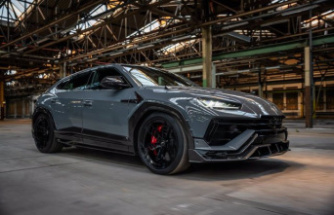When the publicist for a new podcast, Predicting our Future, asked me to have a listen, I had some doubts. It’s all about prefabricated housing, an industry I worked in before coming to TreeHugger. The podcast was being put together by Andrew Weinreich, an internet entrepreneur, and I wondered how applicable that kind of experience could be when looking at prefab housing. I thought it would be hard to stay upright on the treadmill at the Y when I was so busy rolling my eyes while listening to this.
In fact, after listening to the first four episodes, I found the series to be surprisingly thorough and informative, without any howling errors. Andrew paints it with perhaps too bright and positive a brush for my tastes, but then I am still burnt by my experiences.
© Blu Homes
He starts with an aggressive statement: that for someone to succeed in the high tech world, you cannot be a little better than the existing product, you have to be TEN TIMES better than your nearest competitor if you are going to break through the clutter. “So what would it take for a startup to be ten times better? It would probably have to be one tenth the cost or maybe take one tenth the time. If you were able to accomplish that, then you would have a truly great business.” And there, at 9:21 into episode one, he almost lost me. Because I do not believe this is possible, and it represents a total misunderstanding of how the housing industry works.
See: Sears Mail-Order Home From 1925 Was a Prefab Pioneer
But I persevered and began to quite enjoy the show. He gets into the history of prefab, the Sears precut kit home, the post world war II building of Levittown, and the growth of factory built HUD code manufactured homes. He skips over the very important stories of Allison Arieff's book on prefab, Acorn, the Dwell House competition, Michelle Kaufmann, Marmol Radziner and much of the first wave of modern prefab, which is a shame, they played a big role in what was to come. Then at 15:20 he makes what I think is an error:
I can’t find a single instance of a HUD code manufacturer who has taken any interest in expanding into the high end modular space or the multifamily or the multifamily space to build apartment buildings so while the HUD code space may interest Warren Buffett, my focus for this podcast is with the new companies looking to reinvent the housing industry.
© Clayton Industries i-home
In fact, many, if not all of the modular builders build manufactured homes that are not HUD code, many of them are building high end homes both modern and traditional, and a lot of the architect designed high end homes are built by the same companies. Even Warren Buffett and Clayton offered a modern high end design, the failed i-house. Some builders are beginning to "chunk", to build prefab pieces that get put together on site. The big builders are beginning to import fancy tech from Europe and are fully aware of what is going on.
Meanwhile, the start-ups that Andrew is so fond of, that are going to revolutionize the industry, are still pretty few and far between. Listen to Episode 1: Home in a box.
Episode 2: Half-Priced Hamptons © Resolution 4 Architecture
Episode 2 gets into high end modular construction:
Modular builders have taken the art of prefabrication to an entirely new level, where entire rooms with insulation, plumbing, and electric wiring are made in a factory. These rooms (called “modules”) are transported to a building site and then stacked next to and on top of one another to form a home in days. In the Hamptons, Seattle, San Francisco, Los Angeles, and other major cities, it’s now possible to build a beautiful modern home modularly for as much as 50% the cost of building with local contractors.
Andrew interviews Joseph Tanney of Resolution 4 Architecture, who explains that the reason Res4 can deliver a Hamptons house for less than an onsite builder is because in the Hamptons, the builders are so expensive; they are like supermodel Linda Evangelista who famously said “we don't wake up for less than $10,000 a day.” So Resolution 4 can deliver for half what the local builder does; it is still four times as much as a conventional mass produced house in a conventional suburb. It is still niche.
© The Dwell House that started it all.
Joe has told me that he is a traditional architect doing custom designs; he just has them build in a factory. The reason that the modular builders in North America are not highly automated is that almost everything they do is custom; unlike Scandinavia, where companies like Lindbak are turning out homes on highly automated lines for multiple unit projects, these are all one-offs. They are building in a factory under cover, but they are building pretty much the same way one would build in the field. It happens also to be cheaper than trying to build in some of the world’s most expensive cities.
But putting a roof over one’s head in a factory is the definition of overhead; factories have lots of it. As I noted in a post after the 2009 crash when almost the entire industry closed up:
It is not like the Toll Brothers went out with axes and chopped down trees together, they used 2x4s and 4x8s and modularized components. The industry was pretty efficient, and they didn't have to pay for things like factories and pensions and union dues, since most of the people who built the houses were subcontractors who were happy to work outside and the customers were happy to take what they got. This is an immensely flexible system. Putting it under a roof caused as many problems as it solved.
Now I should note that after I wrote that, Joe Tanney of Resolution: 4 responded and told me that I was wrong. That was a while ago and I am not convinced yet that much has changed.
Weinreich suggests that most of these companies in the new prefab space are following the Tesla model, where they start at the high end of the market and then move to the larger more affordable market. However there is a fundamental difference: When you buy a Tesla, you have a complete product that you can drive away.
When you buy a Blu Home or hire Resolution 4, you need a piece of land. You need foundations. You need sewer and water connections and building permits and lot levies and other charges. So even if you were able to drive the costs and construction time of the house down dramatically, as Weinreich says is necessary to have a real impact, that is only one component of the deal. The only way it would be comparable to Tesla is if Elon Musk had to sell the garage, the driveway, electrical outlet and drivers licence along with the car.
© Great Gulf
I believe that as long as the prefab house is sold separately from land, it will be a niche product for the rich. But I have been wrong before, and developers are beginning to catch on, as seen with Great Gulf Homes in Canada, which is now building modern and traditional homes using European tools and flatpack designs.
Donald Trump may also be a boon for the prefab industry: As Weinreich points out, prefabs do well in Japan and Europe where labor is expensive and in short supply. In America, most homes are built by small subcontractors, many of whom use undocumented labor. If the President kicks everybody out, then the robots may get a chance to take over the housing industry too.
Listen to Episode 2: Half Priced Hamptons
This was supposed to be a short review of a fascinating series; instead I have got carried away by too much personal history and perhaps picky criticisms of what is a good listen, for which I apologize. I couldn't even get it all into one post; Episodes 3 and 4 focus on the bigger picture of multifamily housing, which will follow shortly.
Our editors found this article on this site using Google and regenerated it for our readers.













